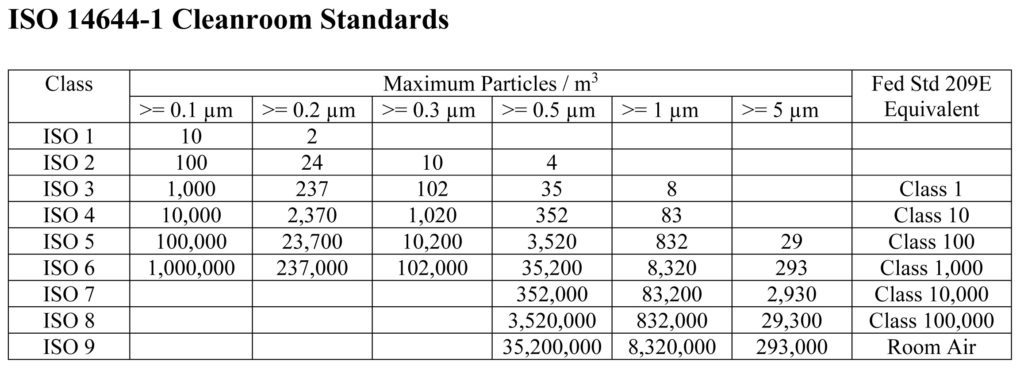Cleanroom Classifications
What are Cleanroom Classifications?
Cleanroom classifications are an important part of cleanroom design, development, and everyday use. They regulate a cleanroom’s degree of cleanliness and are defined by the allowed amount of contamination by particle count and size, as well as the necessary air change rates depending on the cleanroom’s classification level.
There are a variety of classification types that govern cleanroom cleanliness, but the main system was laid out by the International Standards Organization. ISO classifications apply to all cleanroom industries and applications. Other standards and regulations, such as the USP or ASTM International Standards, are organized around industry specific requirements.
Types of Cleanroom Classifications
Cleanroom classifications exist to regulate contaminants and control product quality. Different types of cleanroom classifications specify allowances for different industries, cleanroom operations, and developed products. While each industry may have its own specific requirements to control the cleanroom environment and protect products, processes, and employees, all cleanrooms fall within the overarching classification system developed by the International Standards Organization.
ISO Cleanroom Classifications
The International Standards Organization’s classification system became the official system in 2001, replacing the Federal 209E Standards. The new system broadened the scope of classifications to include more types of cleanrooms, adding two stricter classes and one less strict. Where the Federal 209E Standards described Classes 1 – 100,000 (or ISO Classes 3 – 8), the ISO 14644-1 classifications encompass a wide variety of cleanrooms that are divided into Classes 1 – 9.
Although many different ISO categories exist, each outlining the standards and classifications for various industries, the most widely used ISO classification document for cleanrooms is ISO 14644-1. Other cleanroom ISO documents, such as ISO 13485 for medical device cleanrooms or ISO 14698 for cleanroom biocontamination control, were developed to prioritize threats those specific applications usually face, and work to keep their environments as clean as possible.
ISO 14644-1 Cleanroom Classifications
ISO 14644-1 requirements describe contamination levels in terms of allowed air particulates in number and size, determine the air change rates or airflow speed within the cleanroom, and outline the necessary percentage of ceiling coverage for filtration. Classes in ISO 14644-1 are divided from 1 to 9, where Class 9 is equivalent to room air and Class 1 represents the cleanest possible cleanroom environment. As the classification number falls, cleanrooms rapidly become cleaner and must comply with stricter standards. The majority of cleanrooms fall within ISO Classes 7 – 8. ISO 5 is considered to be the dividing line where cleanrooms become heavily restricted by rigorous requirements for filtration, contamination, and environmental control.
